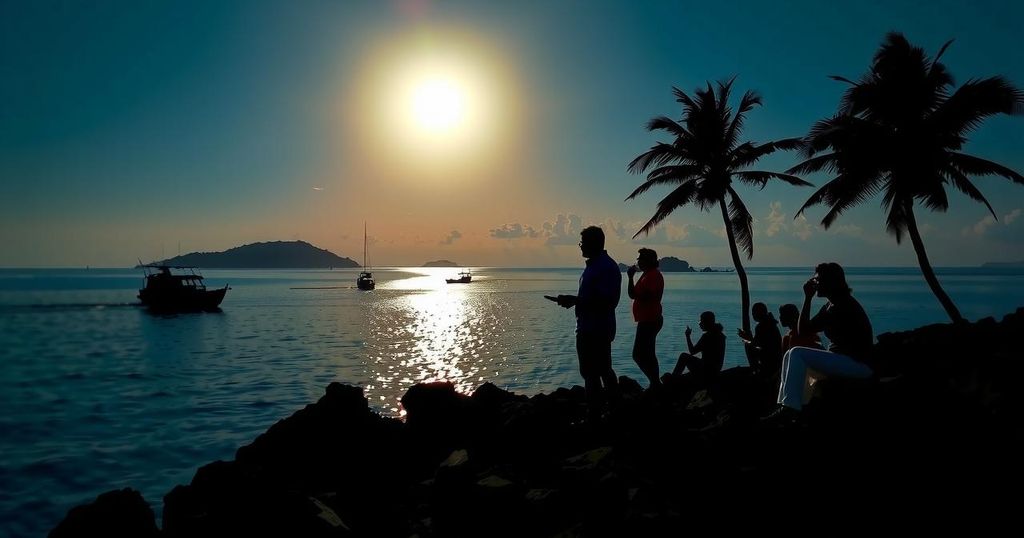Decline in Indian Tourists to the Maldives Amidst Gains for Lakshadweep
In recent months, the Maldives has experienced a significant decline in Indian tourist arrivals, while Lakshadweep is witnessing a marked increase. During the peak travel season from April to June, Lakshadweep’s Agatti Island welcomed 22,990 passengers, a considerable rise from 11,074 passengers in the same quarter of 2023.
The shift in tourist preferences can be attributed to the strained diplomatic relations between India and the Maldives following the inauguration of President Mohamed Muizzu’s administration last year. This diplomatic tension has ignited calls on social media platforms for Indian travelers to boycott the Maldives—a destination that had previously gained popularity among Indian tourists due to enhanced connectivity. Furthermore, Prime Minister Narendra Modi’s visit to Lakshadweep in January prompted renewed advocacy for travelers to opt for this Indian territory instead of the Maldives. As a result, Indian visitors to the Maldives have declined sharply, coinciding with enhanced air connectivity to Lakshadweep, which has seen a substantial increase in passenger traffic.
According to tourism statistics from the Maldives government, the number of Indian tourists fell to 28,604 during the April to June quarter this year, representing a near 50% decrease from the previous year’s figure of 54,207. In contrast, Chinese tourists have surged, overtaking India as the leading source of visitors, with 120,000 arriving in the first half of 2024. Consequently, the Indian market has slipped to the sixth position in terms of tourism contributions to the Maldives, as overall tourist arrivals rose by 9.2% year-on-year—yet markedly impacted by the reduction in Indian visitors.
Enhancements in transportation have also played a crucial role in Lakshadweep’s growing appeal. The number of flights servicing Agatti increased by 88%, totaling 786 flights from April to June this year compared to 418 in the previous year. This uptick includes daily services from Alliance Air, IndiGo, and Fly91, significantly increasing seat capacity to Lakshadweep. Additionally, recent developments have seen cruise ships adding Lakshadweep to their itineraries, further boosting tourist footfall.
Conversely, Maldivian air traffic from India showed little improvement, with only 44 weekly flights reported in June 2024, a drop from 59 flights during the height of the pandemic in June 2022. Notably, major airlines like IndiGo and Air India have reduced their services—IndiGo has not reinstated its previous winter schedules, and Air India has entirely withdrawn its operations for the upcoming winter season.
This ongoing trend of boycotts, primarily propagated through social media, appears to have resonated with a segment of the Indian population, leading to a tangible impact on tourism dynamics in the Maldives. Additionally, the availability of alternative international destinations, coupled with favorable visa policies—such as visa-free or visa-on-arrival options—has empowered Indian travelers to explore diverse holiday choices, including countries like Thailand, Malaysia, and Indonesia.
In conclusion, the Maldives is currently facing notable challenges in attracting Indian tourists, while Lakshadweep emerges as an alternative destination. The long-term effects of the diplomatic discord and evolving travel preferences remain uncertain, leading to questions about whether the Maldives will seek to rectify its image among Indian travelers or if it will continue to prioritize other international markets.
As the tourism landscape evolves, it remains to be seen whether these trends will reverse, or if the Maldives will accept a diminished Indian tourist presence as long as its overall tourist numbers remain buoyant.








Post Comment